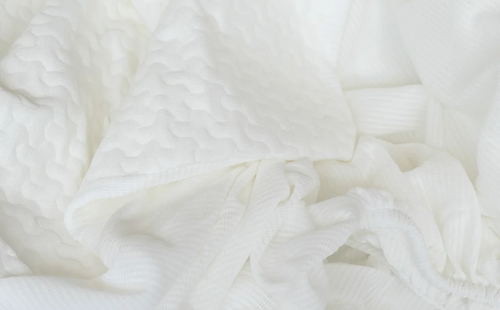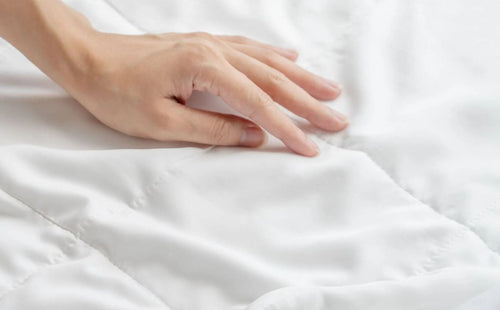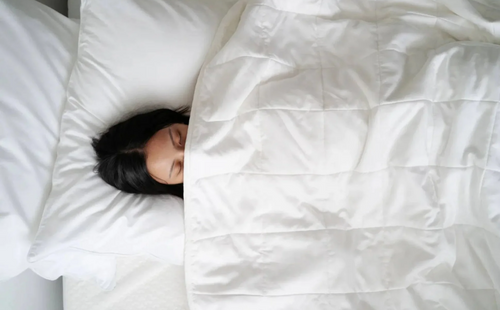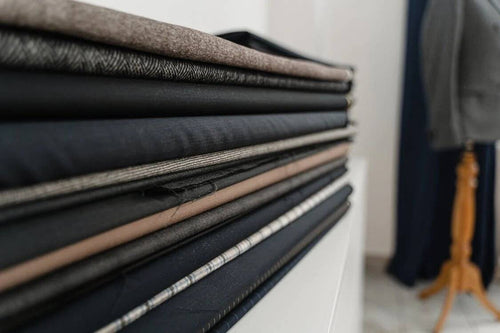At A Glance
Regularly wash your mattress protector to maintain hygiene and extend its lifespan. Use cold water and gentle detergent, and air-dry if possible to preserve its quality.
Quick Tips
- Check care label for specific washing instructions.
- Wash monthly with cold water and mild detergent.
- Air-dry or tumble dry on low heat.
Mattresses are a significant investment, essential for a good night's sleep. To protect this investment, a mattress protector is crucial. Keeping your mattress protector clean and in good condition not only extends its lifespan but also that of your mattress. In this article, we will cover how often to wash your mattress protector and provide key dos and don'ts for proper care. Don’t forget to check the care label before doing so to know how to wash correctly and how frequently to wash your mattress protectors.
Featuring Weavve’s TENCEL™ Lyocell Mattress Protector
Can Mattress Protectors Be Washed?
Mattress protectors aren’t exempt from wear and tear. Therefore, to extend their lifespan and maintain their function, they should be washed regularly. Washing instructions for mattress protectors are typically found on the tags or care cards that accompany the product.
Featuring Weavve’s TENCEL™ Lyocell Mattress Protector
Do You Wash Mattress Protectors Before Use?
It is recommended to wash new mattress protectors before placing them on your bed to eliminate any odours and chemical residues, as well as to soften the fabric. This initial wash also provides an opportunity to carefully study the care instructions on how to wash mattress covers and maintain them effectively.
If you want to find bed linen that provides comfort with your mattress cover, you can try TENCEL™ Bed Linen. Made from 100% Lyocell, TENCEL™ Bed Linen offers a silky smooth, cool hand feel and hotel-quality comfort right in your bed.
How Often Should I Wash A Mattress Protector?
The general rule is to change or wash your mattress protector once per month. This can also be applied to wash waterproof mattress covers. Since the mattress protector is topped with a fitted sheet, fewer dirt particles adhere to it. This means that your fitted sheets are more prone to getting dirty, hence they need to be changed more frequently (ideally once a week) compared to the protectors. However, there are a few situations that may require the need to wash your mattress protectors more often.
Featuring Weavve’s TENCEL™ Lyocell Mattress Protector
Spills
When food and drinks are spilled onto the bed, immediately wash your mattress protector to avoid staining. Stains that have been present for long periods of time can be stubborn and harder to clean. This also applies to bedtime accidents involving blood or urine. Water spills aren’t much of a problem, especially if the mattress protector is waterproof. Simply wiping the water off the surface of the protector should do the trick.
Guest Bedroom
If the mattress protector is in a guest bedroom that is not regularly used, cleaning it every month is not necessary. However, since it can still collect dust, it is recommended to wash it every few months. As a policy, hotels are required to change the beddings after each guest, but it is unclear how often they are required to wash mattress protectors.
Allergy Issues
Mattress protectors can collect dust mites and danders, so people with allergies and sensitive skin are advised to change their mattress protectors more frequently, ideally once every two to four weeks as necessary. Dirt build-up may trigger symptoms such as a runny nose, itchy eyes and sore throat.

Image By Andrea Piacquadio From Pexels
How Do You Deep Clean A Mattress Protector?
Now that you know mattress protectors can be washed, let’s explore how to do it properly, including how to wash a cooling mattress protector. Most mattress protectors—whether waterproof or non-waterproof—are machine-washable. Since mattress protectors are made from different materials, they may require specific care instructions. Here are some general mattress protector washing instructions to ensure they remain effective and durable over time.
Use Cold Water
Wash in cold water. Using hot water may damage the material and weaken its protective features.

Image By RDNE Stock Project From Pexels
Gentle Washing
Set your washing machine to a gentle or delicate cycle. Make sure that no sharp objects or fabrics with zippers are washed together with the mattress protector. It is best to wash the mattress protector on its own.

Image By RDNE Stock Project From Pexels
Opt For Gentle Detergent
Use a mild detergent—avoid bleach! Harsh products, especially on waterproof mattress protectors, can damage their waterproof properties. Ensure you know how to wash a waterproof mattress protector properly to preserve its protective qualities over time.

Image By RDNE Stock Project From Pexels
Optimal Rinse Cycle Advice
Set two to three rinse cycles to ensure that all remnants of detergent are washed off. This step is important for those with sensitive skin or allergies to detergents.

Image By Lum3n From Pexels
Here are 4 tips for washing your mattress protector at home. Remember, different materials have specific care requirements, so always check the instructions first.
If you have a TENCEL™ Lyocell Mattress Protector, here is a care guide to note before washing. This is also useful for any mattress cover made from TENCEL™.
How To Dry A Mattress Protector?
If possible, the mattress cover should be air-dried in direct sunlight. If you opt to tumble dry, use low heat to protect its material. Ensure that it is completely dry before placing it back on the bed, as trapped moisture could cause problems with mildew and bacteria growth.

Image By Lena Shekhovtsova From Pexels
How Do You Clean A Mattress Protector Without Washing It?
If smaller accidents occur leaving the mattress protector with a stain, do not scrub the stain. Instead, get a damp towel and dab the area where the stain is. If you are going to use a stain remover, make sure that it is safe to use on your mattress protectors. You may find this information on the care tag of your protectors.
From time to time, you may also vacuum your protectors to get rid of dust, mites, and pet dander without washing it. Sprinkling baking soda onto the mattress protector’s surface can get rid of any stubborn smells and moisture. Simply vacuum the baking soda after leaving it for an hour or so.
If regularly washing a mattress protector is time-consuming and tedious for you, you can opt to use high-quality fitted sheets to shield both your mattress and mattress protector. It is definitely easier to wash your bedding and change them weekly or bimonthly.
Featuring Weavve’s Signature TENCEL™ Fitted Sheet Set In Sky Blue
Is It Worth Getting A Waterproof Mattress Protector?
Yes, it is. Quality waterproof mattress protectors extend the life of your mattress by protecting it from everyday wear and tear, bugs, and allergens. Materials like TENCEL™ or polyurethane are commonly used for these covers.
However, if you’re looking for a protector that not only offers waterproof protection but also provides a cool sensation, try the TENCEL™ Lyocell Mattress Protector. Made from 100% TENCEL™ outer fabric, it offers excellent thermal regulation and moisture-wicking properties for built-in cool comfort during your sleep. Additionally, we offer a range of TENCEL™ bedding options to suit different budgets, ensuring you find the perfect match for your needs.
Featuring Weavve’s Signature TENCEL™ Collection
Conclusion
Sleep is essential for our well-being, so investing in quality mattresses, protectors, and bedding is crucial. Remember to wash your mattress covers monthly and immediately after spills. Use cold water, gentle detergents, and follow the specific care instructions for the best results.










































